Address
304 North Cardinal
St. Dorchester Center, MA 02124
Work Hours
Monday to Friday: 7AM - 7PM
Weekend: 10AM - 5PM
Address
304 North Cardinal
St. Dorchester Center, MA 02124
Work Hours
Monday to Friday: 7AM - 7PM
Weekend: 10AM - 5PM
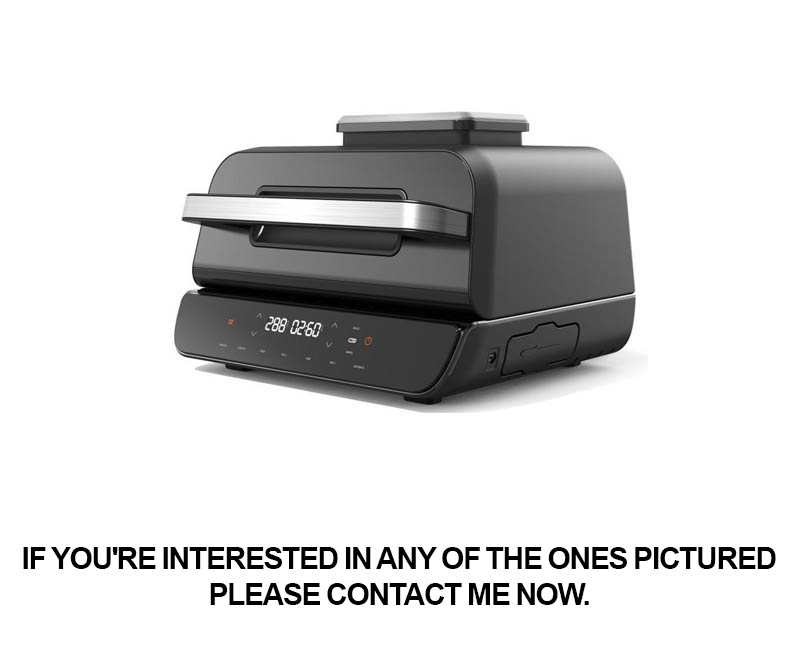
Navigating the culinary appliances market can be quite the challenge, especially when it comes to deciding between versatile kitchen gadgets like air fryers and air ovens. Both promise healthier cooking methods with less oil, but what sets them apart? Let’s dissect the features, benefits, and user experiences to help you make an informed choice.
The Air Fryer Showdown: A Closer Look at Air Fryer vs. Air Oven
In the ever-evolving world of kitchen appliances, two stars have risen to prominence: the air fryer and the air oven. Both promise to transform our cooking experiences with healthier, faster, and more convenient results. But which one reigns supreme in the kitchen? Let’s delve into a comprehensive comparison to find out.
With its sleek design and promise of guilt-free frying, the air fryer has captured the hearts of health-conscious chefs everywhere. Here’s why it’s a favorite among many:
While the air fryer has been stealing the show, the air oven quietly works its magic, offering a range of benefits that set it apart:
In terms of cooking speed, the air fryer often comes out on top. It can cook chicken in about 20 minutes and crispy fries in just 15. The air oven, while not as lightning-fast, is still a speedster with cooking times typically around 30 minutes.
The air fryer shines when it comes to fried foods and crispy snacks, thanks to its ability to replicate the texture of deep-fried food with minimal oil. However, the air oven takes versatility to another level. Its ability to bake, roast, and steam means you can make a wide variety of dishes, from baked pastries to roasted meats.
Both the air fryer and air oven are winners when it comes to health. They reduce the need for oil, which can significantly lower the fat and calorie content of your meals. This makes them perfect for those following a diet or simply looking to improve their health.
Energy efficiency is a crucial factor for many. While the air fryer consumes a bit more energy due to its rapid cooking process, the air oven often makes up for it with its ability to use the heat more efficiently and maintain it longer.
Both appliances are relatively easy to clean. The air fryer’s non-stick basket and the air oven’s interior can be wiped down quickly. However, some users find that the air oven’s design with a glass door and tray may require a bit more attention to avoid food splatters.
Size is a key consideration when purchasing any kitchen appliance. The air fryer is compact and portable, making it great for small kitchens or those who want to move it around. The air oven, on the other hand, is more permanent and can fit into a standard oven spot, which may be a better choice for those who plan to use it regularly.
Users of both the air fryer and air oven have been singing their praises. Many find that the convenience and health benefits are unmatched, though some miss the texture of deep-fried foods. The air oven often gets credit for its ability to replicate oven cooking without the wait.
Ultimately, the choice between an air fryer and an air oven comes down to your personal needs and preferences. If you’re looking for a quick, oil-free alternative to frying and a versatile appliance for a variety of cooking methods, the air fryer might be the way to go. However, if you want an all-in-one oven that can handle a wide range of cooking styles with minimal oil, the air oven could be your perfect match. Both appliances are game-changers in the kitchen, and the right one for you will depend on how you like to cook and what you’re looking to achieve in your culinary adventures.

The air fryer has emerged as a game-changer in the world of cooking, offering a healthier alternative to traditional deep-frying. By using hot air to circulate around the food, it reduces the need for oil, which means you can enjoy crispy, golden-brown results with a fraction of the fat.
Despite its compact size, the air fryer is incredibly versatile. It can roast, grill, bake, and even dehydrate food, making it a versatile appliance that can replace several others in your kitchen. Its sleek design also means it can easily fit on any countertop, without taking up too much space.
One of the standout features of an air fryer is its speed. Whether you’re preparing a quick snack or a full meal, the air fryer can cook food in a fraction of the time it takes in a traditional oven. This is especially beneficial for busy households or those looking to reduce cooking times without compromising on taste.
Thanks to its even heat distribution, the air fryer ensures that your food cooks uniformly. This means no cold spots or overcooked edges, leading to perfectly cooked meals every time. It’s a great tool for browning meats, making crispy potatoes, or even cooking whole birds.
Modern air fryers come with a variety of settings and pre-programmed recipes that allow you to customize your cooking experience. From adjusting the temperature to setting the timer, these appliances make it easy to experiment with different cooking techniques and achieve the perfect results.
Compared to traditional ovens, air fryers are much more energy-efficient. They use less power to circulate hot air around the food, which not only saves you money on your energy bills but also reduces your carbon footprint.
With the ability to cook a wide range of snacks, the air fryer encourages healthier eating habits. You can enjoy crispy French fries, chicken wings, and even onion rings with less oil, making these indulgent treats more guilt-free.
One of the biggest advantages of air fryers is their ease of cleaning. Most models come with non-stick surfaces that prevent food from sticking, and the removable parts can often be washed in the dishwasher. This makes post-cooking cleanup a breeze.
Not just for frying, the air fryer is also excellent for baking. Whether you’re making cookies, cakes, or even bread, the air fryer can provide the perfect environment for rising and browning, resulting in delicious homemade treats.
If you’re looking to cook for a crowd or prepare meals for the week, the air fryer is your go-to appliance. Its large capacity allows you to cook large batches of food, making it ideal for batch cooking and meal prepping.
Cooking with an air fryer doesn’t leave any strong odors in the kitchen, unlike deep-frying. This means you can enjoy the aroma of freshly cooked food without the lingering smell of oil.
Most air fryers come with safety features like automatic shut-off and cool-touch handles, making them a safe appliance for the entire family to use. The intuitive controls and digital displays also make them easy to operate, even for those who are not tech-savvy.
In the long run, an air fryer can be a cost-effective addition to your kitchen. By reducing the amount of oil you use and cutting down on cooking time, you can save on ingredients and electricity, making it a wise investment for any home chef.
Whether you’re following a low-carb, gluten-free, or vegetarian diet, the air fryer can accommodate your needs. Its ability to cook a wide range of foods in a healthy manner makes it a versatile choice for anyone looking to eat more healthily.
With its compact size and ease of use, the air fryer is also great for outdoor cooking. Whether you’re camping, having a picnic, or hosting a barbecue, you can enjoy crispy, cooked-to-perfection foods without the need for a traditional oven.
In summary, the air fryer is a marvel of modern kitchen technology, offering a healthy, efficient, and versatile cooking experience. Its numerous benefits make it a must-have appliance for anyone looking to elevate their culinary skills while maintaining a balanced diet.

The Air Oven: Exploring Its Unique and Versatile Cooking Abilities
Air ovens have been gaining popularity in modern kitchens, and for good reason. These innovative appliances offer a range of cooking capabilities that can transform your culinary experience. Let’s delve into the unique features and benefits of an air oven.
Rapid Heat DistributionOne of the standout features of an air oven is its ability to heat up quickly and distribute heat evenly throughout the cavity. This ensures that your food cooks uniformly, reducing the risk of overcooking or undercooking certain parts.
Convection CookingThe air oven utilizes convection technology, which means hot air is circulated around the food, creating a gentle breeze that promotes even cooking. This method is highly efficient, as it reduces cooking times compared to conventional ovens.
Baking and Roasting PerfectionAir ovens excel in baking and roasting, thanks to their ability to mimic the effects of a traditional oven. Whether you’re preparing a delicious cake, a juicy roast, or even a perfectly crispy pizza, these appliances can achieve impressive results.
Versatile Cooking OptionsBeyond the basics of baking and roasting, air ovens offer a variety of cooking modes that cater to diverse tastes and preferences. From broiling to dehydrating, these versatile appliances can handle a wide array of culinary tasks.
Energy EfficiencyOne of the most appealing aspects of an air oven is its energy efficiency. By using convection technology, these appliances can often reduce energy consumption by up to 20% compared to traditional ovens. This not only saves money on your utility bills but also helps to reduce your carbon footprint.
Healthier Cooking OptionsAir ovens are a fantastic choice for those looking to maintain a healthy diet. The convection process minimizes the need for excessive oil, resulting in lower fat content in your meals. This makes it an excellent option for cooking healthier versions of your favorite dishes.
Space-Saving DesignAir ovens are designed to be compact yet powerful, making them a great space-saving solution for smaller kitchens. Their sleek and modern look also adds a touch of style to your cooking area.
Precise Temperature ControlWith adjustable temperature settings, air ovens allow you to achieve precise cooking temperatures for a wide range of recipes. This control is crucial for delicate dishes like delicate pastries or delicate meats that require a specific cooking temperature.
Easy to Use and MaintainAir ovens are designed with user-friendliness in mind. Their intuitive interfaces and simple controls make it easy to navigate through various cooking modes. Additionally, their non-stick interiors and easy-to-clean surfaces ensure minimal maintenance.
Versatile Cooking SettingsFrom preheat to keep-warm, air ovens come with a variety of cooking settings that cater to different stages of your meal preparation. You can also use them to defrost frozen foods, making them a versatile addition to any kitchen.
Versatile CapacityWhile some air ovens are compact, others offer a larger capacity to accommodate larger batches of food. This is particularly useful for families or those hosting gatherings, as it allows for cooking multiple dishes at once.
Enhanced Flavor and TextureThe combination of rapid heat distribution, even cooking, and the absence of excessive moisture creates a unique flavor and texture profile for your food. Air ovens often result in dishes that are crispy on the outside and tender on the inside.
Versatile Add-Ons and AttachmentsMany air ovens come with optional attachments, such as pizza stones, broil racks, and rotisseries, which expand their capabilities and allow for even more creative cooking options.
Perfect for Busy LifestylesAir ovens are a fantastic choice for those with busy lifestyles. Their quick cooking times and ability to handle a variety of cooking methods make them an invaluable asset for anyone who wants to enjoy homemade meals without spending hours in the kitchen.
In conclusion, air ovens offer a multitude of unique cooking capabilities that make them a valuable addition to any kitchen. From their energy-efficient design to their versatile cooking options, these appliances are sure to enhance your culinary experience and make cooking more enjoyable and efficient.
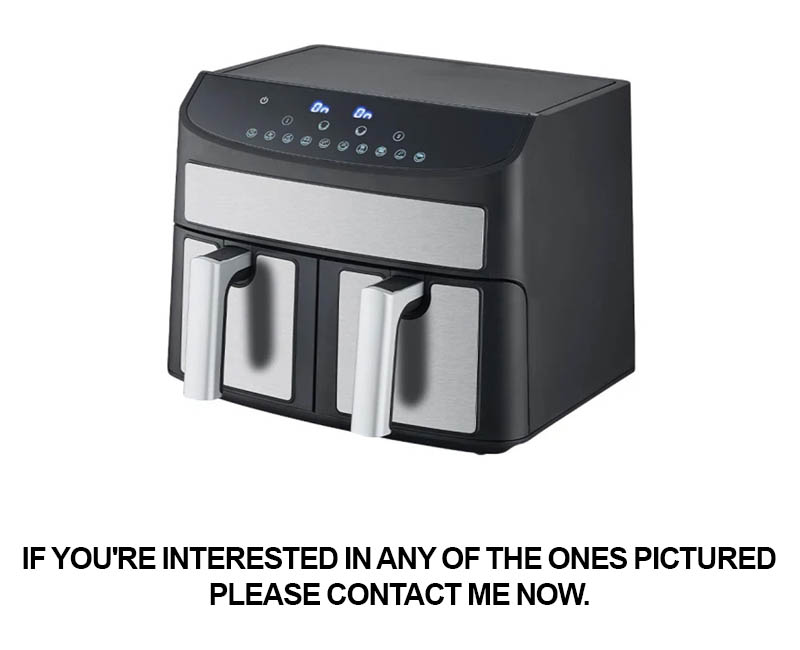
When it comes to the art of cooking, speed and efficiency are often at the forefront of every home chef’s mind. But how do air fryers and air ovens measure up in this crucial department? Let’s delve into the details to see how they stack up against each other in terms of cooking speed and efficiency.
Cooking Time Chronicles
Air fryers are renowned for their quick cooking times. Thanks to their powerful heating elements and the circulation of hot air, they can often reduce cooking times by up to 75% compared to traditional frying methods. This means that a batch of crispy French fries that would typically take 20 minutes to deep-fry can be ready in about 5 minutes using an air fryer.
On the flip side, air ovens, while not as fast as air fryers, still offer impressive speed. These ovens, often equipped with multiple heat settings and convection fans, can cut down cooking times significantly compared to conventional ovens. A roast chicken that would normally take an hour and a half in a standard oven might be ready in as little as 45 minutes in an air oven.
Energy Efficiency Showdown
While air fryers win the race in terms of speed, they might not always be the clear winner when it comes to energy efficiency. These countertop appliances generate a lot of heat, which can translate to higher energy consumption. However, newer models are incorporating smart technology to optimize energy use, making them more efficient over time.
Air ovens, particularly those with convection capabilities, tend to be more energy-efficient. The fan-assisted heat distribution ensures that the entire cooking space is heated uniformly, reducing the need for prolonged cooking times and, consequently, energy usage. This makes air ovens a greener choice for those who are conscious of their carbon footprint.
Versatility in Action
When comparing cooking speed and efficiency, it’s also important to consider versatility. Air fryers are fantastic for foods that require a crispy outer layer, such as fried chicken, fish, and vegetables. Their rapid heat-up time means you can have a golden-brown, crispy dish in a flash.
Air ovens, while they may not be as fast at achieving that crispy texture, excel in a wider range of cooking methods. Roasting, baking, and even defrosting can be done more quickly and evenly in an air oven. This versatility means that for those who enjoy a variety of cooking techniques, an air oven could be the more efficient choice.
Cooking Space and Quantity
Another factor to consider is the size of the cooking space and the quantity of food you can prepare at once. Air fryers are typically compact and great for single servings or small batches of food. This can be a significant advantage for those who are cooking for one or prefer portion control.
In contrast, air ovens are designed to accommodate larger batches of food, making them ideal for families or those hosting dinner parties. The larger capacity can lead to more efficient cooking sessions, especially when you’re preparing multiple dishes simultaneously.
Consistency in Results
One of the hallmarks of a good cooking appliance is consistency in results. Air fryers provide a consistent cooking temperature throughout the basket, ensuring that each piece of food gets evenly cooked. This is especially important for maintaining the texture and flavor profile of fried foods.
Air ovens also offer consistent cooking temperatures, but they may have some variation depending on the oven’s size and the position of the food within the oven. However, with the use of convection technology, the heat is more evenly distributed, leading to consistent outcomes.
Maintenance and Cleaning
When it comes to maintaining and cleaning both appliances, speed can be a double-edged sword. Air fryers are generally quick to clean, as their non-stick surfaces make for easy wipe-downs. However, their compact size means that larger batches of food can be more of a challenge to manage.
Air ovens, with their larger interiors, may require more time to clean, but they can handle larger loads of dishes at once. The larger capacity can also mean that cleaning is spread out over multiple sessions, which might be more convenient for some users.
In the End
When it comes to cooking speed and efficiency, both air fryers and air ovens have their strengths and weaknesses. Air fryers are king when it comes to speed and the creation of crispy textures, but they may not be the most energy-efficient option. Air ovens, on the other hand, offer a more varied cooking experience and are often more energy-efficient, but they may not match the rapid cooking times of air fryers.
Ultimately, the choice between an air fryer and an air oven depends on your personal cooking habits, the size of your household, and your preferences for cooking methods. Both appliances can significantly enhance your kitchen’s efficiency, but it’s about finding the right match for your needs.
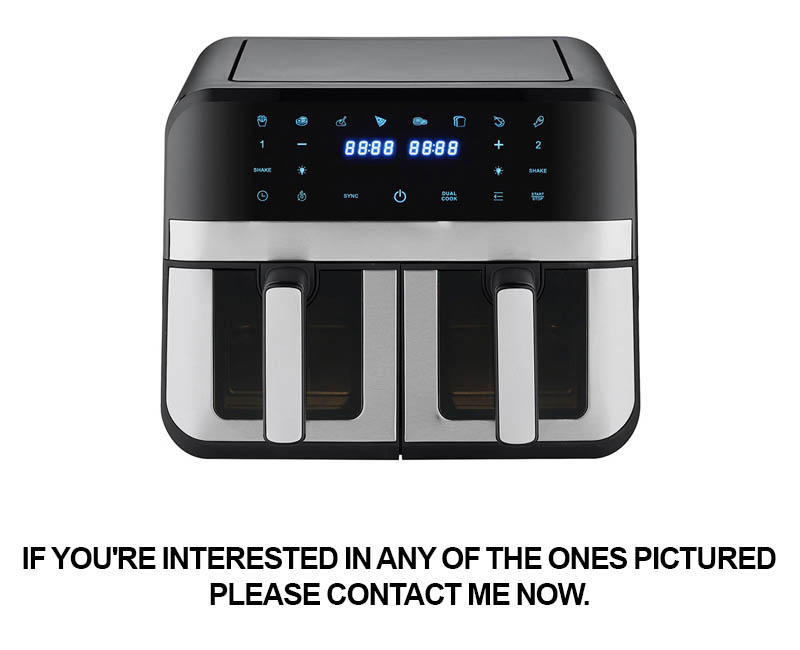
The Air Fryer: A Culinary Chameleon’s ToolkitThe Air Oven: A Multi-Talented Kitchen WorkhorseAir Fryer Dishes: A Flavorful PaletteAir Oven Recipes: A Broad Spectrum of ChoicesAir Fryer Delights: From Snacks to Main MealsAir Oven Menus: A Culinary Journey Through Various CuisinesAir Fryer Snacks: Quick Bites with a CrunchAir Oven Bakes: A Warm and Fluffy ArrayAir Fryer Appetizers: Starters That PopAir Oven Desserts: Sweet Indulgences with a Twist
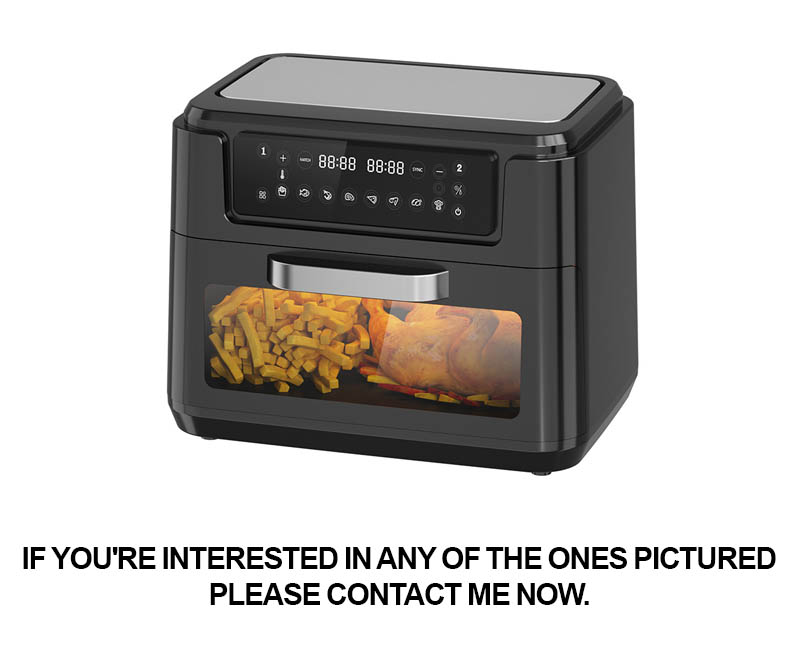
In the quest for healthier cooking options, air fryers and air ovens have emerged as two popular contenders. Both promise to reduce fat and calories, but how do they measure up in terms of health benefits? Let’s explore the low-fat cooking capabilities of these kitchen appliances.
Air fryers, with their circulating hot air, offer a unique method for cooking that mimics deep-frying without the oil. This technology not only cuts down on the amount of fat used but also significantly reduces the calorie count of your favorite meals. For instance, crispy French fries cooked in an air fryer can be up to 80% lower in fat compared to their traditional fried counterparts. The process of air frying also retains more of the nutrient content in vegetables and meats, as it doesn’t involve submerging them in hot oil.
Conversely, air ovens, or convection ovens, use a fan to circulate hot air around the food, resulting in an even cooking temperature. This method is particularly effective for roasting and baking, which can naturally render fat from meats. Unlike air fryers, air ovens don’t have the same level of oil-reduction capability as they don’t exclude the use of oil in the cooking process. However, they can be used with a minimal amount of oil or even fat-free cooking sprays, which can still offer substantial health benefits.
One of the key health advantages of both air fryers and air ovens is the ability to cook a variety of foods with a lower fat content. For those looking to reduce their intake of saturated fats and trans fats, these appliances can be game-changers. Air fryers, for example, can be used to cook a host of snacks, from chicken wings to mozzarella sticks, with a fraction of the oil. The result is a crispy texture that’s still satisfying, but with fewer calories and less guilt.
In the realm of air ovens, health-conscious cooks can enjoy a wide array of dishes, including roasted meats, vegetables, and even desserts. The convection process helps to evenly distribute the heat, ensuring that the food is cooked thoroughly and the fat is rendered out of the meat. This makes it easier to trim excess fat from the cooked product, further enhancing its health profile.
Another aspect to consider is the cooking time. Air fryers often tout their quick cooking capabilities, which can be particularly appealing for those looking to reduce overall calorie intake. By cooking food faster, you may be less likely to overeat, as the urge to snack between meals diminishes. Similarly, air ovens can provide efficient cooking times, which means you can enjoy your meals without waiting for them to be prepared.
When it comes to health considerations, it’s also important to note that both air fryers and air ovens can be used to prepare a variety of low-fat and low-calorie recipes. From vegan and vegetarian dishes to gluten-free and paleo-friendly options, these appliances offer a versatile way to cook a wide range of healthy meals. Whether you’re following a specific diet or simply looking to incorporate more nutritious eating habits into your life, these appliances can be powerful tools.
Moreover, the convenience of these appliances cannot be overstated. With the ability to cook a variety of foods in a single appliance, you can reduce the need for multiple pots and pans, which can lead to less kitchen clutter and easier cleanup. This not only saves time but also minimizes the temptation to use unhealthy shortcuts, such as processed or fried foods.
In summary, both air fryers and air ovens have their strengths when it comes to health considerations. While air fryers excel in their ability to reduce fat and calories through their unique cooking method, air ovens offer a broad range of cooking options that can be tailored to fit different dietary needs. Regardless of which appliance you choose, the ultimate goal is to promote healthier eating habits by providing low-fat cooking alternatives. Whether you’re aiming for weight loss, heart health, or simply a more nutritious lifestyle, these appliances can be valuable additions to your kitchen arsenal.
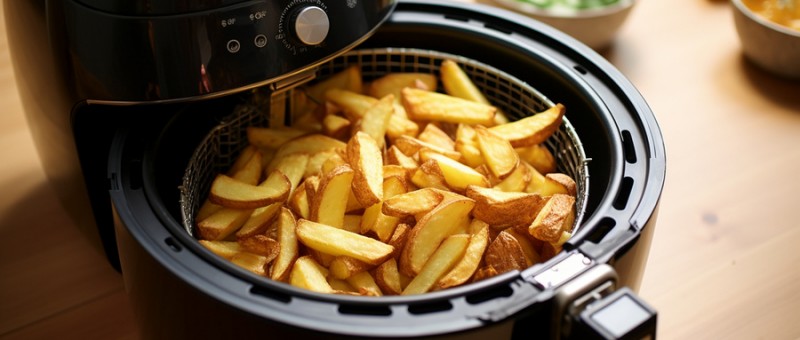
In the realm of kitchen appliances, energy efficiency is a critical factor that can impact both your utility bills and the environment. Let’s delve into the cost-saving aspects of air fryers and air ovens, comparing their energy consumption side by side.
The Energy Efficiency DilemmaWhen comparing the energy usage of air fryers and air ovens, it’s essential to consider the way each appliance operates. While both claim to be healthier alternatives to traditional deep frying and baking, their energy demands can vary significantly.
Air Fryers: The Power PlayersAir fryers are known for their ability to circulate hot air around food, thereby reducing the need for oil. However, their energy consumption can be quite high, especially when compared to air ovens. The rapid heating and constant circulation of air require a substantial amount of power.
Air Ovens: The Steady BurnOn the other hand, air ovens, also known as convection ovens, use a fan to circulate hot air around the food, much like a traditional oven. While they may use a bit more energy than air fryers due to the fan and heating element, they often operate at a lower temperature, which can lead to more efficient cooking times.
Cooking Times and Energy UseOne of the key factors in energy consumption is cooking time. Air fryers typically cook food at a higher temperature, which can mean shorter cooking times but also higher energy usage. Conversely, air ovens may take longer to reach the desired temperature but can maintain it more efficiently, leading to overall lower energy consumption.
Cost ImplicationsThe cost of energy consumption can vary widely based on the model, the settings used, and the length of cooking time. For instance, an air fryer that cooks a meal in 10 minutes might use more energy than an air oven that takes 20 minutes, but the oven’s lower operating temperature could result in a lower total energy cost.
Real-World ComparisonsTo get a clearer picture, let’s consider some real-world scenarios. An air fryer that consumes 1500 watts for 10 minutes might use 15 kilowatt-hours (kWh) for a single use. In contrast, an air oven that consumes 1000 watts for 20 minutes might use 20 kWh, but since it’s likely to be more efficient at maintaining temperature, it could save energy over time.
Environmental ImpactThe environmental impact of energy consumption is also a significant concern. Air fryers, due to their higher energy usage, may contribute more to greenhouse gas emissions than air ovens, especially if the electricity comes from non-renewable sources.
Innovation and New TechnologiesAs technology advances, both air fryers and air ovens are becoming more energy-efficient. Newer models often include features like smart sensors that adjust the heat and fan speed to match the cooking requirements, thereby saving energy.
Energy-Saving TipsFor those looking to save energy with their air fryer or air oven, here are a few tips:
Preheat Your Appliances: Preheating your air fryer or air oven can save energy by ensuring that the appliance doesn’t need to work as hard to reach the desired temperature.
Use the Right Size: Cooking with the right size of food and using the appropriate tray or basket can help maximize efficiency.
Optimize Cooking Settings: Adjusting the cooking settings to the lowest possible temperature that still provides the desired results can reduce energy use.
Combine Tasks: If you have multiple items to cook, consider combining them in the same appliance to take advantage of the heat already generated.
Unplug When Not in Use: Even when not in use, appliances can draw power. Unplugging your air fryer or air oven when not in use can save energy.
ConclusionWhen it comes to energy consumption, both air fryers and air ovens have their pros and cons. While air fryers offer quick cooking times, they may consume more energy. Air ovens, while potentially more energy-efficient, may take longer to cook. Ultimately, the choice between the two should be based on your specific needs, cooking habits, and environmental considerations. By understanding the energy implications of each, you can make a more informed decision that aligns with your cost-saving and eco-friendly goals.

Navigating the Cleaning and Maintenance Landscape: Keeping Your Appliances in Top Shape
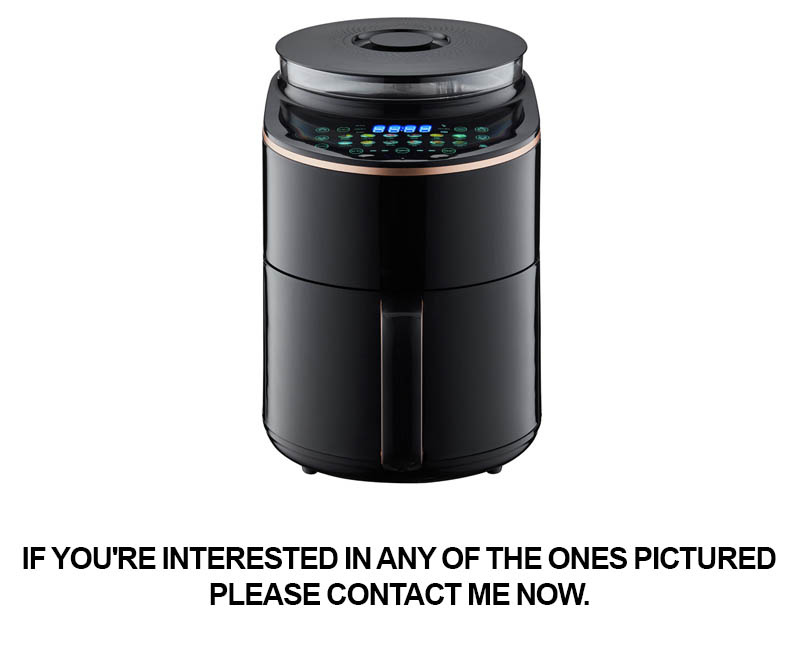
Cooking Appliances in a Compact Kitchen: Air Fryer vs. Air Oven: A Space-Saving Showdown

When it comes to making purchasing decisions, the insights from actual users can be invaluable. Here’s a glimpse into what real buyers have to say about their experiences with various products, offering a candid look at what works well and what doesn’t.
“I was skeptical at first, but the air fryer has been a game-changer. It’s compact and doesn’t take up much space on my countertop. Plus, it’s so easy to clean.”
“The air oven was a surprise hit in my kitchen. It’s not just for roasting; it can bake, broil, and even defrost. I love how versatile it is.”
“I’ve tried both the air fryer and the air oven, and I prefer the air fryer for its speed. It’s perfect for those quick meals when you’re short on time.”
“The air oven’s convection feature is amazing. It cooks food evenly, and I’ve noticed a significant reduction in cooking time compared to my traditional oven.”
“The air fryer has revolutionized my cooking habits. I used to deep-fry everything, but now I can enjoy crispy, delicious food with a fraction of the oil.”
“I was concerned about the noise level of the air fryer, but it’s surprisingly quiet. It’s a great appliance to use in the evening without disturbing anyone.”
“The air oven has a sleek design that fits perfectly in my modern kitchen. It’s a bit pricier, but the convenience and efficiency make it worth it.”
“I’ve had my air fryer for over a year now, and it’s still going strong. It’s durable and the non-stick surface makes cleanup a breeze.”
“The air oven’s temperature control is spot on. I can set it to the exact degree I need for different types of cooking, which is a big plus for me.”
“I was worried about the size of the air fryer, but it’s surprisingly spacious. It fits a lot more food than I expected, and it’s great for batch cooking.”
“The air oven’s ability to cook multiple dishes at once is fantastic. I can prepare a full meal with minimal effort, which is perfect for family gatherings.”
“I’ve read some negative reviews about the air fryer’s odor, but I haven’t had that issue. It’s been a pleasant addition to my kitchen.”
“The air oven’s preheat function is a time-saver. I don’t have to wait long for it to reach the desired temperature, which is great for last-minute meals.”
“I’ve been using the air fryer for a variety of recipes, from chicken wings to French fries. It’s amazing how much healthier the food tastes compared to deep-fried.”
“The air oven’s ability to maintain a consistent temperature is impressive. It ensures that my food is perfectly cooked every time.”
“I was initially put off by the price of the air fryer, but it’s been a worthwhile investment. It’s paid for itself in the money I’ve saved on cooking oil.”
“The air oven’s interior is easy to clean, which is a big plus for me. It’s a hassle-free appliance that doesn’t require much maintenance.”
“I’ve noticed that the air fryer’s cooking time is a bit longer than traditional frying, but the results are worth the wait. It’s a healthier alternative that doesn’t compromise on taste.”
“The air oven’s energy efficiency is a big advantage. It uses less electricity than my conventional oven, which is great for my utility bills.”
“I’ve had both the air fryer and the air oven, and I use them both regularly. Each has its strengths, and they complement each other well in my kitchen.”

Deciding on the Right Cooking Companion: An Air Fryer vs. Air Oven Face-Off